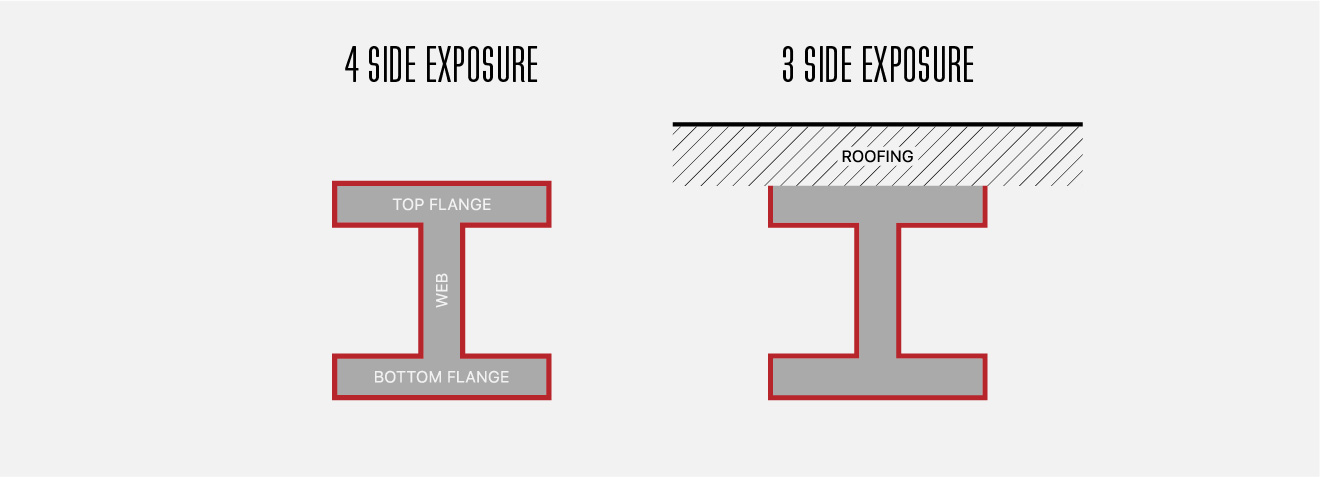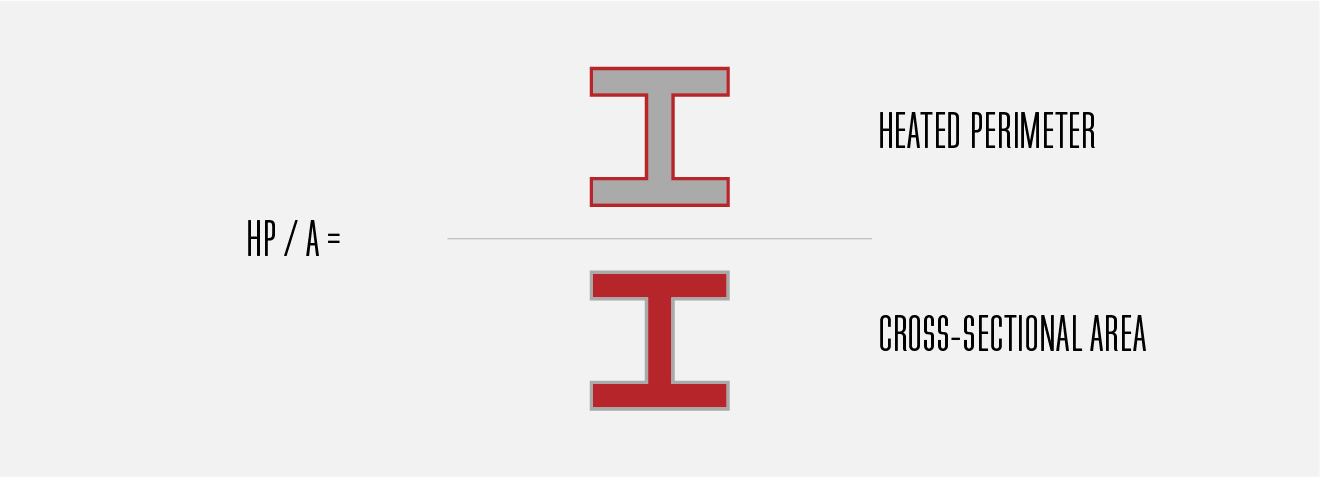THE BEHAVIOUR OF STRUCTURES IN FIRE
The response of a steel structure in a fire can be influenced by:
the maximum temperature attained, the degree to which it is loaded and the temperature dependent mechanical properties of the steel.
The term ‘Fire Resistance Rating ‘ is associated with the ability of a building element to perform its function as a barrier or structural component for a specified time during the course of a fire. The rating is typically specified in accordance with structural design guidance documents and standards in combination with a critical core temperature.
The most commone critical core temperature for the steel is 400°C, 538°C, 550°C.
The most common periods are 60 minutes, 90 minutes or 120 minutes.
SPECIFICATION PRINCIPLES
Specifications of thickness of passive fire protection system (fireproofing) vary depending on the substrate and steel profile.
Factors influencing the specification are:3-4 sides
-Type of section (open/ closed/cellular profile)
-Massivity of the steel (setion factor) (Hp/A)
-Exposure (i.e. 3 sided, 4 sided exposure)
-Fire Rating (30/ 60/ 90/ 120 min)
-Critical temperature (CT)
-Type of fire

Hp/A CONCEPT
Hp/A factor (A/V ; Massivity ; Section Factor) is a calculated numerical value [m-1] where:
Hp = Heated Perimeter of the steel [m]
and A = Cross-sectional Area of the steel [m2]

High Hp/A value:
– Low mass of steel
– Fast heating
– Higher dry film fireproofing thickness
Low Hp/A value:
– High mass of steel
– Slow heating
– Lower dry film fireproofing thickness